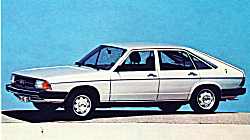









Second-Generation Chevrolet Volt Could Use Rotary Engine !!!!!!!
New range-extending engines are already being tested for the second-generation Chevrolet Volt. Among them, two-cylinder and rotary power plants
The Chevrolet Aerovette is a car created by the Chevrolet division of General Motors, beginning life as Experimental Project 882 (XP-882). It has a mid-engine configuration using a transverse mounting of its V-8 engine. Zora Arkus- Duntov's engineers originally built two XP-882s during 1969, but John DeLorean, Chevrolet's general manager, canceled the program because it was impractical and costly. But when Ford announced plans to sell the DeTomaso Pantera through Lincoln-Mercury dealers, DeLorean ordered one XP-882 cleaned up for display at the 1970 New York Auto Show.
In 1972, DeLorean authorized further work on the XP-882 chassis and gave it a new project code, XP-895. A near-identical body in aluminum alloy that resembled the XP-895 was constructed, and became the "Reynolds Aluminum Car." Two of the Chevrolet Vega 2-rotor engines were joined together as a 4-rotor, 420 horsepower (310 kW) engine, which was used to power XP-895. The XP-895 was first shown in late 1973. Another Corvette concept, XP-897GT, also appeared in 1973, which used a 2-rotor engine. However, with the energy crisis of the time, GM scrapped its rotary development work and all plans for a Wankel-powered car. The XP-897GT 2-rotor Concept was sold to Tom Falconer and fitted with a Mazda 13B rotary engine in 1997.
In 1976, the 4-rotor engine was replaced by a 400 cu in (6,600 cc) Chevy V-8, and the concept car was named Aerovette and approved for production for 1980. The Aerovette featured double folding gullwing doors. The production car would use a 350 cu in (5,700 cc) V-8, and priced between $15000-$18000. However, after chief supporters Duntov, Bill Mitchell, and Ed Cole had retired from General Motors, David R. McLellan decided that a front/mid-engine car would be more economical to build and would have better performance, and canceled Aerovette program. Contemporary import mid engine cars had poor sales in the United States compared to the Datsun 240Z, which ultimately determined the Aerovette's fate, terminating production plans.

No comments:
Post a Comment